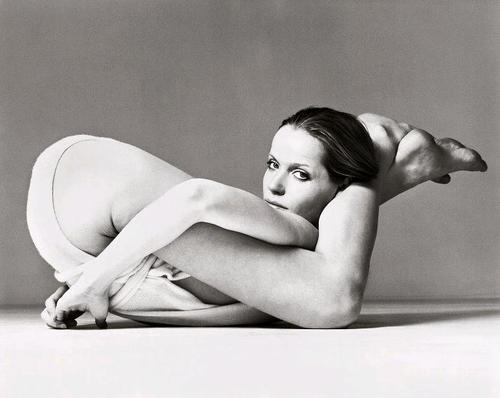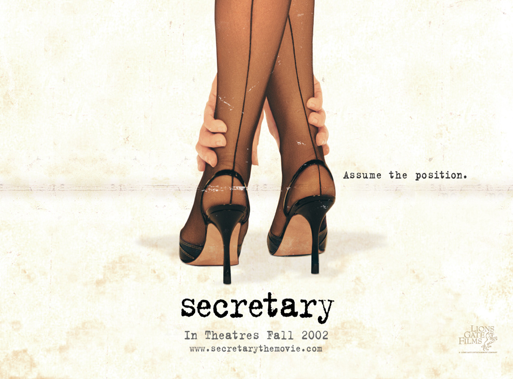The House of Pain: Ashtanga Yoga.
Yoga Nidrasana Circa, 1972
By Anne Finstad.
Have you seen the movie called Secretary?
It didn’t show in main stream theaters. There was an 80s star in it and the subject matter was BDSM Bondage, Discipline, Submission, Masochism), something most people didn’t want to spend two hours watching let alone thinking about that much.
I have never forgot that movie though, and not because I particularly enjoy watching BDSM.
A few years later a yoga student came along. She was into BDSM. I can say this here and talk about it because she was like that movie — not afraid to talk about it. She would talk about what it felt like to be involved in the experience during our yoga sutra discussion group. Needless to say out sutra discussion groups became a fair bit juicier for a while.
It made me think of the theme of that movie. Secretary is about a girl who falls in love bondage style, while around her the folks who aren’t “into” S&M are doing incredibly masochistic things. The movie indicates how ironic it is we don’t want to hear about masochism, yet many of us practice it in our lives.
With all the talk lately about pain and ashtanga yoga (thanks David G. it is a great discussion to start), it has made me think about the movie, the student and the practice of ashtanga yoga.
There was a long time for me, the practice just hurt. I spend my first trip to Mysore having torn a hamstring insert before going. It meant a lot of adjustments from Guruji and made me wonder what was wrong with all of us — especially me. It was not an ideal spiritual journey. It was pure raw pain and it was not only painful it was exhausting. I really was suspicious that Pattabhi Jois was a crazy man and we were all crazy for going to India to go through this. And as many will tell you, he didn’t really explain much to you, he just did it. So there was a great deal or room to wonder.
The thing was, and thank God, that part of the practice wasn’t forever. This magic thing happened where after five years of practice my hips opened. After seven years of practice, my knees stopped hurting. And as people will tell you or you can see if someone sticks with the practice over time and through these things, the body is made new.
It’s not a perfect transformation in all cases and the limits of it are dictated by how we take the practice. But as much as we let it the practice will change us for the better.
Other things will change too. Again, it is dictated by what the student practices, but it is possible to become calmer through this practice. To let go of some of the somatic crap that we have accumulated in the lives we have survived so far, and actually become happier people. We can become more relaxed, better able to breathe and prepare ourselves to face the rest of our lives. Face it and not run from it.
There is a reason they want teachers to practice for a long time before teaching. There is a reason Pattabhi would say, “Slowly, slowly.” It takes a long time to see beyond that breaking down of the body that is the initial phase of the method. To see that the method is not crazy. And to get beyond that initial phase of practice that can seem rather masochistic.
I certainly know I am not everyone. Some never experience pain. Some go through years without ever practicing with an injury. If that is you bless you.
I’m not writing this to tell everyone’s story.
I am writing this to say that everyone at some point has an experience of pain. We each have an attitude towards our own pain. To me the practice is a good way to start looking at how we approach pain. This discussion isn’t always comfortable, but it is one that a lot of us need to have. To work out how to not seek it, avoid it, or fear it. It’s going to happen, this pain. Just like life is going to happen. Sometimes it calls on us to do something, and sometimes we just need to let it be what it is and not try to fix it.
What the practice teaches me is how to let go of fighting the pain — to move on and through it without hanging on or becoming identified with it. To let pain become another sensation that educates me, to change my behavior, or to accept what is.
This, rather than just putting my foot behind the head, is yoga.
*****
Anne Finstad started yoga in 1996, unable to touch her toes. After five years of practice she set off to India where she had the honor to study with Shri K Pattabhi Jois and his grandson Sharath in the intimacy of the original shala. After four additional trips to India over nine years, and many years of daily practice, she had the honor of receiving the authorization to teach this method from Shri K Pattabhi Jois and his grandson Sharath, an honor currently granted to less than 100 people in the United States. She has been teaching Mysore Style Ashtanga classes in the manner she was taught in India for over ten years, and she has witnessed first hand the powerful transformation and healing available to practitioners of Ashtanga yoga with patience, practice, and time. You can find her own website at www.sattva-yoga.com, and most days you can find her teaching or practicing at www.yogaisyouth.
*****



